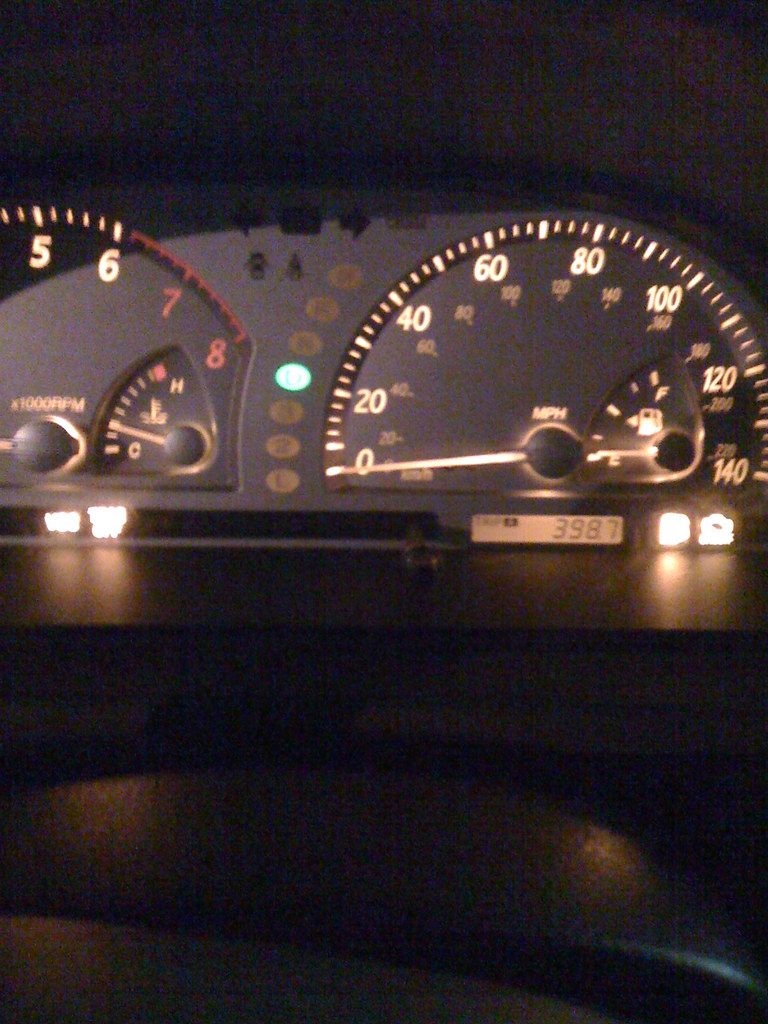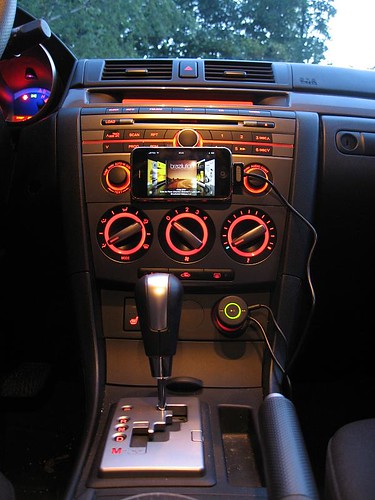
Buying a used car is an exercise in both excitement and extreme caution. The allure of a great deal can often overshadow the subtle, yet critical, warning signs that whisper — or sometimes scream — that something is amiss. In the bustling marketplace of pre-owned vehicles, savvy shoppers know that not every gleaming paint job or low price tag tells the whole story. It’s a journey where vigilance is your most valuable co-pilot, guarding you against what could swiftly turn a promising purchase into a financial headache.
Too often, used car shoppers, driven by urgency or the sheer desire for a new set of wheels, fall victim to persuasive sales pitches. These pitches invariably hinge on “the idea that only a little minor work or investment will make it a great and affordable daily driver.” This narrative, as experienced automotive experts like the Car Wizard warn, is a recurring theme with potentially disastrous outcomes. The truth is, many seemingly minor issues are mere camouflage for “multiple-thousand-dollar repair problems” sellers are desperately trying to offload.
To help you navigate this complex terrain, we’ve compiled a list of 12 crucial red flags – from the overt to the deceptively subtle – that demand your attention. These are the tell-tale signs that could save you from driving away with a “rusted-out shipwreck” instead of the “buried treasure” you deserve. Arm yourself with this knowledge, master “the art of sniffing out a scam,” and ensure your next used car purchase is a smart investment, not a costly surprise. Let’s dive into the first set of these indispensable warnings.

1. **Too Many New Parts**This is a scenario that might initially seem like a bonus: a used car boasting “a plethora of new parts.” On the surface, it appears the previous owner has invested significantly, saving you from immediate replacement costs. However, this seemingly advantageous situation often conceals a far more troubling reality that demands a closer look.
Rather than celebrating the new components, a seasoned observer immediately shifts focus to the underlying cause. The crucial question to ask isn’t what new parts you won’t have to replace, but “What problem were they chasing that probably is not fixed yet, and the reason why the car is being sold?” This discerning perspective is vital for protecting your investment.
A car with an “assortment of parts replaced” is a classic indication of a seller — or previous owner — who was engaged in what’s colloquially known as “firing the parts cannon.” This strategy involves indiscriminately replacing components in the hope of stumbling upon a solution, rather than employing “a troubleshooting diagram and good diagnostic skills.” The expensive repairs undertaken often point to an elusive, persistent problem that was never truly resolved, leading the owner to finally throw in the towel and put the car up for sale.
When confronted with a vehicle flaunting numerous recent replacements, it’s imperative to exercise extreme caution. These new parts, while individually sound, can collectively signal a deeper, unresolved mechanical or electrical gremlin. An independent mechanic’s thorough pre-purchase inspection becomes non-negotiable in such a situation, as their diagnostic expertise can often uncover the elusive issue that the “parts cannon” approach failed to address. Don’t let new parts blind you to a potentially ongoing, costly mystery.
Read more about: Vanishing Acts: 10 Famous Actors Who Disappeared After One Huge Hollywood Hit

2. **Seller Downplays Problems or Claims “No Time” for Repairs**Encountering a seller who readily admits to a car’s imperfections might seem like a refreshing display of honesty. They might even go as far as to state, “Here is what is wrong with the car,” and then present a stack of new parts they’ve already purchased for the repair. The catch? They claim they “do not have the time to take care of it,” offering this as the reason for selling.
This scenario is a classic red flag, a thinly veiled attempt to offload a vehicle with unresolved issues. The Car Wizard YouTube channel, a trusted source for automotive wisdom, explicitly warns against this particular tactic. While the seller might present a convincing narrative about a busy schedule or lack of tools, the reality is often far less benign and significantly more problematic for a prospective buyer.
“More likely than not,” the expert analysis suggests, “the seller has already worked on the car and has given up.” This isn’t a matter of convenience; it’s a matter of defeat. They’ve likely invested time, effort, and money into fixing the perceived problem, only to find it more complex or persistent than anticipated. The purchased parts are merely evidence of their failed attempts, now packaged as an enticing solution for an unsuspecting buyer.
The implication here is profound: if the original owner, who presumably knows the car best, couldn’t resolve the issue, what makes you think it will be a “minor work or investment” for you? This tactic is designed to make you believe you’re getting a simple fix, but in practice, you’re inheriting a problem that defeated its previous owner. A thorough pre-purchase inspection is paramount to uncover the true scope of the “minor issue” the seller is so eager to pass on.

3. **Missing Title: The “It’s In The Mail” Excuse**Few red flags are as immediate and as critical as a seller’s inability to produce the vehicle’s title. When faced with this situation, sellers often resort to various excuses, frequently claiming, “It’s in the mail,” or some other equally implausible reason for its absence. This particular explanation, according to automotive experts, is “always a lie.”
The implications of a missing title are severe and multifaceted, extending far beyond a simple administrative delay. The absence of a physical title prevents the legal transfer of ownership, leaving you vulnerable to a host of potential headaches. This isn’t merely an inconvenience; it’s a foundational breach in the integrity of the sale that should immediately trigger a full stop to negotiations.
One grim possibility is that the vehicle could be “a stolen vehicle that the seller is trying to flip quickly as a great deal.” Purchasing a stolen car, even unknowingly, can lead to its confiscation without compensation, leaving you out of pocket and without a vehicle. Another scenario involves a vehicle that “has been salvaged,” and the seller “has not been able to get a legal title for it,” indicating past damage that made the car a total loss.
Perhaps “very likely is the situation that he owes the bank money on the loan that financed the car and he is trying to pass the debt off onto you.” This is a particularly insidious form of deception, where you could unwittingly assume the previous owner’s financial obligations. Regardless of the specific reason, any deviation from a clear, present, and verifiable title is an absolute deal-breaker. No title, no deal – it’s that simple and critical for your protection.

4. **Curbstoning: The Imposter Seller**The practice known as “curbstoning” is a deceptive and illegal maneuver employed by unscrupulous individuals attempting to pass themselves off as private sellers. This red flag often manifests when a seller states they are “selling the car for someone else, like an elderly relative or a friend who moved.” While this might sound plausible on the surface, it is a tactic designed to obscure the true nature of the transaction.
In reality, curbstoning involves an individual, often an unlicensed dealer, selling a car “from a curb or parking lot and pretends to be either a private seller or someone with permission to sell the car on another person’s behalf.” This illicit activity allows them to bypass the regulations and consumer protections that govern legitimate dealerships, leaving buyers exposed to significant risks without recourse.
The core issue with curbstoning lies in the misrepresentation of the seller’s identity and professional status. By posing as a private party, they avoid providing warranties, adhering to disclosure laws, and accepting accountability for potential issues. The true motive is usually to offload vehicles quickly, often those with hidden problems or unclear histories, before buyers can uncover the truth.
The clearest and most actionable warning against this practice is straightforward: “If their ID does not match the name on the title name…run!” This simple verification step can save you from a myriad of legal and financial headaches. Always insist on seeing the seller’s identification and meticulously compare it with the name listed on the vehicle’s title. Any discrepancy is an undeniable sign to disengage immediately and seek your next vehicle elsewhere.

5. **Extended Warranty Offer for Suspected Issues**Imagine you’re test-driving a used car, and while it generally “looks good, and the price is a good deal to boot,” you can’t shake the feeling that “something is not right with the way the engine sounds.” It’s not an obvious fault, but a subtle anomaly that raises your internal alarm bells. When you bring this concern to the dealer, their response becomes a critical red flag.
Instead of a thorough investigation or a transparent explanation, the dealer “reassures you that the engine is fine.” This dismissal is immediately suspicious. But then, to assuage your lingering doubts, they pivot, offering “an extended warranty that will cover any problems that develop, and we will take care of it at no cost to you.” This seemingly generous offer is often a deceptive tactic, not a genuine gesture of customer service.
The harsh reality, as many unsuspecting buyers discover too late, is that “an extended warranty will not cover whatever problem develops with the car.” These warranties are often riddled with exclusions, pre-existing condition clauses, or specific component limitations that conveniently fail to cover the very issue the dealer is trying to mask. The dealer’s true motivation is simply “trying to make a sale and get you out the door,” rather than ensuring you drive off with a reliable vehicle.
This strategy is a calculated risk for the dealer, banking on the buyer’s relief at the perceived protection of a warranty, even if that protection is illusory. It’s a classic example of a seller downplaying a potential problem and then using a superficial fix — an unhelpful warranty — to close the deal. Always be wary of an extended warranty offered too readily in response to a suspected fault; it often signals a problem they know about but refuse to address honestly.
Read more about: Shoes Sent to be Recycled Found Dumped and Resold in Indonesia After Trackers Unravel Global Waste Mystery

6. **The Illusive Check Engine Light**The illuminated “Check Engine Light” is perhaps one of the most common and widely recognized warning signs in any vehicle. In the used car market, however, its presence is frequently met with a myriad of dismissive explanations from sellers. They might try to explain it away as merely “an intermittent oxygen sensor or other sensor-blamed problem,” attributing its persistence to backlogged parts orders, the pandemic, or any number of other convenient excuses.
While it is true that a check engine light can sometimes indicate a minor issue, relying on a seller’s casual reassurance is a perilous gamble. The context explicitly warns that these seemingly innocuous explanations often mask a far more significant issue. What is dismissed as a simple sensor problem can, in reality, “turn out to be a multiple-thousand-dollar repair problem they are trying to unload on you.” This stark reality underscores the importance of never ignoring this illuminated symbol.
A glowing check engine light is a digital cry for help from your car’s onboard diagnostic system. It signifies that a fault code has been registered, indicating a discrepancy in the engine’s operation or emissions system. Even if the car appears to be running fine, this light is a direct warning that something under the hood needs attention, ranging from a loose gas cap to a failing catalytic converter or a severely misfiring engine.
The critical takeaway here is to never accept a seller’s casual dismissal of the check engine light. Instead, insist on having the codes pulled by a trusted, independent mechanic using an OBD-II scanner. This tool can “decode the problem, revealing any lurking issues the seller might not mention.” Without this crucial diagnostic step, you are potentially buying into a significant repair bill disguised as a minor inconvenience, turning your intended savings into unexpected expenses.
The transition from the initial set of red flags, often involving deceptive seller behavior and legal issues, naturally leads us to the physical and performance-based warning signs that a vehicle itself might present. While paperwork and promises can be manipulated, the car’s condition often tells a much truer story. These are the tangible clues, the mechanical whispers, and the visual shouts that demand your unwavering attention during any used car evaluation. Don’t let the excitement of a potential purchase blind you to what the car is trying to communicate through its very state of being.

7. **”I Lost the Keys” or “The Starter Went Bad”** Imagine arriving to inspect a used car, advertised as “runs good,” only to find it unresponsive. The seller, with a shrug, offers an array of excuses: “I lost the keys,” or perhaps, “The starter went bad.” This immediate inability to demonstrate the car’s basic functionality should instantly trigger alarm bells. A car that cannot be started and driven is a car whose operational integrity is completely unverified, regardless of any promises.
The true red flag here isn’t just the car’s immobility, but the seller’s narrative surrounding it. They might even try to rush you into a purchase with a sense of urgency, saying, “buy it now before its gone,” promising to “fix” the problem for you later. This tactic is a transparent attempt to sidestep a crucial part of the inspection process, preventing you from assessing the engine’s health, transmission function, and overall drivability.
The “fix it later” promise is almost always a trap. If the problem were truly minor, or easily resolved, why wouldn’t the seller address it before putting the car on the market? The Car Wizard’s advice strongly implies that such excuses often mask a more significant, underlying issue that the seller is either unwilling or unable to rectify. You would be assuming a costly, unknown repair with little recourse.
Never proceed with a purchase if you cannot start, run, and thoroughly test drive a vehicle. The ability to do so is fundamental to any meaningful pre-purchase inspection. Any seller who obstructs this essential step, particularly with vague excuses about keys or starters, is signaling that they have something significant to hide about the vehicle’s true condition. Your immediate response should be to disengage from the deal, prioritizing your financial safety over a potentially regrettable bargain.

8. **No Cold Air from the AC** During a test drive, everything might seem perfect—the engine purrs, the ride is smooth—until you realize the air conditioning isn’t blowing cold air. When questioned, the seller frequently offers a seemingly benign explanation: “It just needs a few cans of refrigerant from Walmart.” This seemingly simple solution is a pervasive and dangerous myth in the used car market, designed to downplay a potentially expensive repair.
As automotive experts warn, the reality of “what is really going on” is often far more severe. The issue could be “a bad compressor or serious AC system leak or another malady that is going to cost you a few thousand dollars to have fixed.” Components like the compressor, condenser, evaporator, or various lines and seals are all susceptible to failure, and their replacement can be labor-intensive and costly, easily eclipsing the perceived “deal” on the car.
Therefore, if a used car’s AC isn’t blowing cold, do not accept the “just needs a recharge” explanation. Insist on a thorough inspection by a certified mechanic who can properly diagnose the system, identify any leaks, and estimate the true cost of repair. A functioning AC system is not a luxury in many climates, and inheriting a multi-thousand-dollar repair bill for it can quickly turn a good purchase into a financial burden you didn’t anticipate.
Read more about: The Revival Circuit: 12 Forgotten Concepts That Changed the Automotive Industry

9. **Inconsistent Paintwork and Body Panels** A used car’s exterior can reveal a wealth of information to the discerning eye. If your potential new ride “looks like a patchwork quilt” due to mismatched paint or uneven panel gaps, it’s an immediate visual red flag that warrants deeper investigation. These inconsistencies are not merely aesthetic imperfections; they often serve as tell-tale signs of a more significant and potentially problematic history.
As seasoned observers know, “mismatched paint and uneven panel gaps are like bad makeup jobs—meant to cover up something ugly underneath.” This “ugly underneath” frequently points to previous accidents, collision repairs, or bodywork that was performed poorly or without proper attention to detail. A car that has been involved in a substantial collision, even if “repaired,” may still harbor underlying structural damage or compromise that is not immediately visible.
To properly assess this red flag, take a moment to carefully inspect the vehicle from various angles under good lighting conditions. Pay close attention to the way light reflects off the paint, noting any abrupt changes in hue or texture between adjacent panels. Furthermore, physically “run your hand along the seams” where body panels meet. If the gaps are inconsistent, wider on one side than another, or if the panels themselves feel “wavier than a rollercoaster,” it’s a strong indication that the car has undergone significant bodywork.
Such findings should never be dismissed as minor cosmetic flaws. They represent vital clues about the car’s past, suggesting a history of damage that could affect its safety, structural integrity, and long-term reliability. A professional pre-purchase inspection by a body shop expert or a mechanic experienced in collision repair can help uncover the full extent of any prior damage, ensuring you don’t inadvertently buy into a vehicle with hidden structural issues.

10. **Visible Rust or Corrosion** While a touch of patina might add character to certain vintage vehicles, “a little rust might add character to a vintage truck,” its presence on a modern used car is rarely a sign of charm; “but on a used car, it’s more like a ticking time bomb.” Rust and corrosion are not just unsightly blemishes; they are insidious processes that can severely compromise a vehicle’s structural integrity, safety, and overall lifespan. Ignoring visible rust can lead to significant and often irreparable issues down the line.
The destructive nature of rust goes far beyond the surface. It “eats away at the frame, turning solid metal into brittle flakes,” weakening critical components that are essential for the car’s safety and performance. This includes the chassis, suspension mounting points, brake lines, fuel lines, and exhaust system. Extensive structural rust can make a vehicle unsafe to drive, potentially leading to catastrophic failure of components during normal operation or, more critically, in an accident.
When inspecting a car, pay close attention to areas where rust commonly forms: wheel wells, rocker panels, door bottoms, around windshields, and especially the undercarriage. Use a flashlight to examine the frame rails, suspension components, and brake/fuel lines for any signs of significant rust. Surface rust on easily replaceable components might be manageable, but deep, flaky, or perforated rust on structural elements is an absolute deal-breaker.
A car with noticeable rust is effectively telling you that its battle against the elements is already being lost. What you see on the surface is often just the tip of the iceberg, with much more severe corrosion potentially hidden from view. Investing in a vehicle with significant rust issues is almost always a losing proposition, as repairs are often costly, temporary, and fail to restore the car to its original structural strength.
Read more about: Why Your Parking Spot Matters: 14 Hidden Dangers to Your Car and the Environment

11. **Signs of Water Damage** Among the most insidious and financially devastating red flags in the used car market are “signs of water damage.” A car that smells “like a damp basement” upon entry should immediately trigger an intense level of suspicion. This musty odor, combined with other subtle indicators like “fogged-up headlights,” are not just minor quirks; they are “ghostly whispers of past flood damage,” a category of damage that can render a vehicle a perpetual headache and safety hazard.
Water damage, particularly from flooding, is uniquely problematic because it affects nearly every system in a car simultaneously. The electrical system, which is increasingly complex in modern vehicles, is especially vulnerable. Water can cause corrosion, short circuits, and intermittent failures that are incredibly difficult and expensive to diagnose and repair, often leading to a cascade of inexplicable electrical gremlins for years to come. Beyond electrical issues, water can compromise the engine, transmission, braking system, and even the structural integrity of the vehicle if it sits in corrosive water for too long.
To thoroughly check for water damage, don’t rely solely on your nose. Be proactive in your inspection. “Pull back the floor mats and check for silt or new carpeting in an otherwise well-worn car.” Look into crevices, under seats, and inside the glove compartment for water lines, mud, or debris. Inspect seatbelt webbing for discoloration or stiffness, and check under the dashboard for rust on screws or metal components. Even subtle signs of moisture or mildew are cause for serious concern.
Purchasing a flood-damaged vehicle, even one with a “rebuilt” title, is an extremely risky endeavor. The long-term costs and safety implications often far outweigh any initial savings. If you detect any “ghostly whispers” of water damage, or if the car simply feels or smells “off,” it is prudent to “run” and seek a vehicle with a clean, verifiable history, free from the lingering specter of past submersion.
Read more about: Beyond the Badge: Uncovering the Hidden Flaws in 14 Fan-Favorite Vehicle Models

12. **Missing or Incomplete Service Records** When contemplating the purchase of a used car, its service history acts as an invaluable chronicle, detailing its life story through maintenance and repairs. Therefore, encountering “a seller who shrugs when you ask for service history or hands over a suspiciously thin file is a red flag” that should not be overlooked. Comprehensive service records offer transparency and peace of mind, demonstrating that the vehicle has been properly cared for.
“Gaps in documentation might mean skipped maintenance or even a shady past,” experts emphasize. A diligent owner typically keeps meticulous records of oil changes, tire rotations, brake service, and other crucial preventative maintenance. The absence of such records raises legitimate questions: Has the car received its scheduled maintenance? Were critical fluid changes overlooked? Has the vehicle been involved in undeclared incidents that required repairs? Without this documentation, you are essentially buying a car blind, relying solely on the seller’s assurances.
To counter this red flag, it’s essential to be proactive. “Always ask for receipts and verify them with a trusted mechanic.” A mechanic can not only review the provided records for authenticity and completeness but can also perform a physical inspection to see if the car’s condition aligns with its reported history. Discrepancies between the service history and the car’s current state are significant indicators that something isn’t adding up.
A complete and verifiable service history is more than just a stack of papers; it’s a testament to the car’s value and the care it has received. It empowers you to make an informed decision, understanding the vehicle’s maintenance schedule, potential future needs, and any past issues it may have had. Without this crucial insight, you are taking an unnecessary gamble, potentially inheriting a legacy of neglect and costly surprises.
Read more about: Beyond Swords and Sorcery: 15 Medieval Movie Blunders That Hollywood Keeps Getting Wrong About Knights, Castles, and Culture
In the complex landscape of used car shopping, vigilance is not merely a virtue—it is an absolute necessity. From the deceptive narratives of sellers to the subtle, yet powerful, physical warnings emanating from the vehicles themselves, every detail matters. The journey to a reliable pre-owned car is fraught with potential pitfalls, but by arming yourself with the knowledge of these comprehensive red flags, you transform from a susceptible buyer into a savvy, empowered consumer. Remember, the true value of a used car lies not just in its price, but in its proven history, its current condition, and the transparent story it tells. Don’t just look for a deal; look for a sound investment that promises many miles of worry-free driving.



